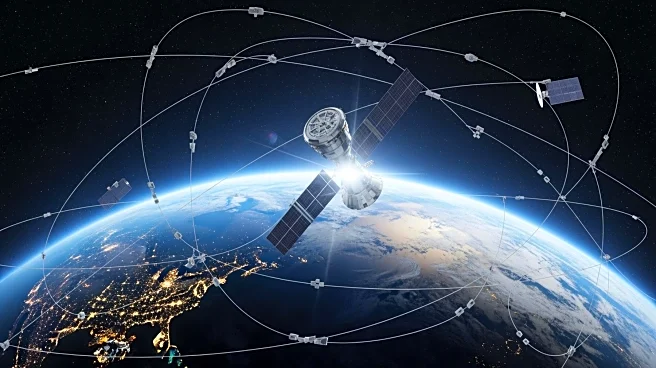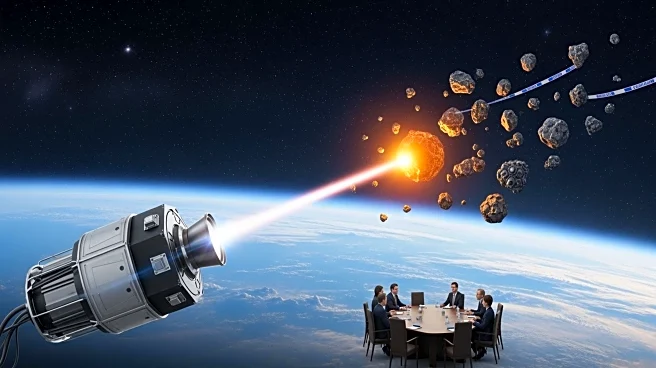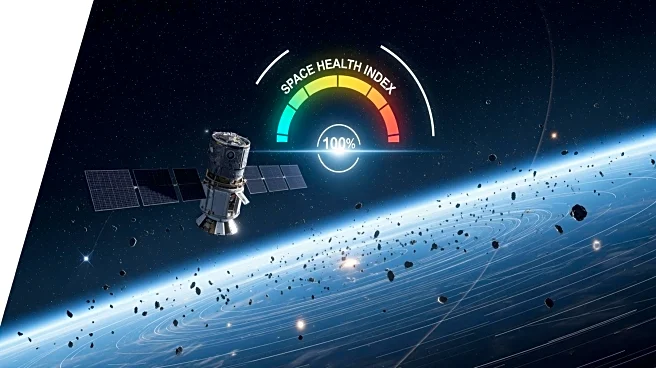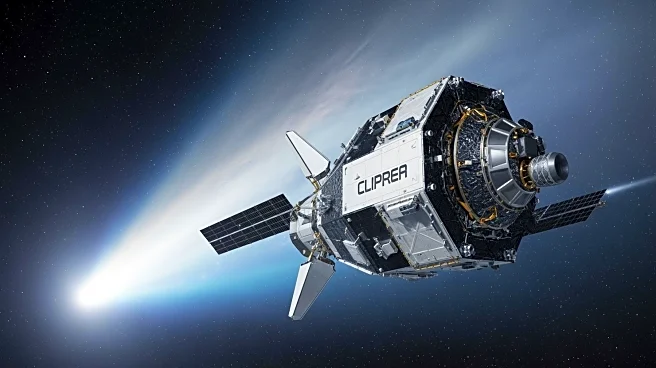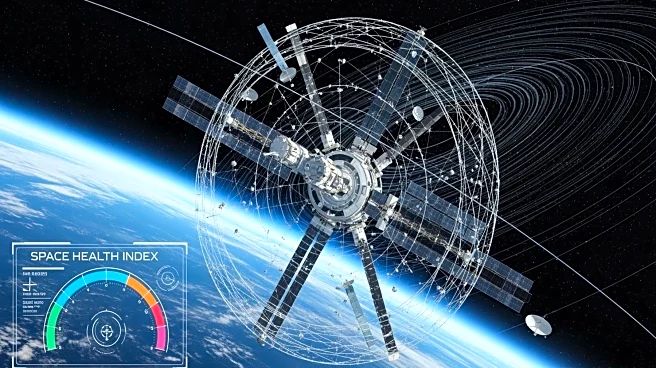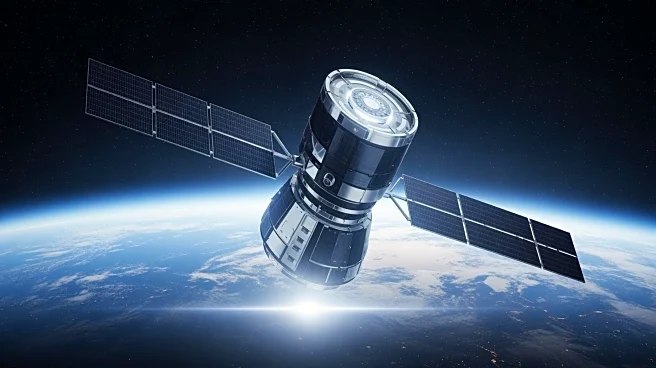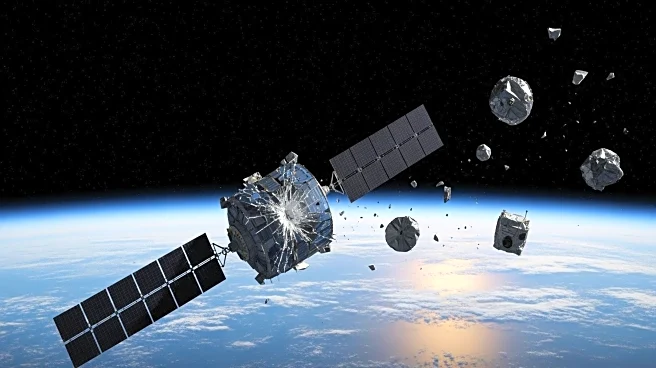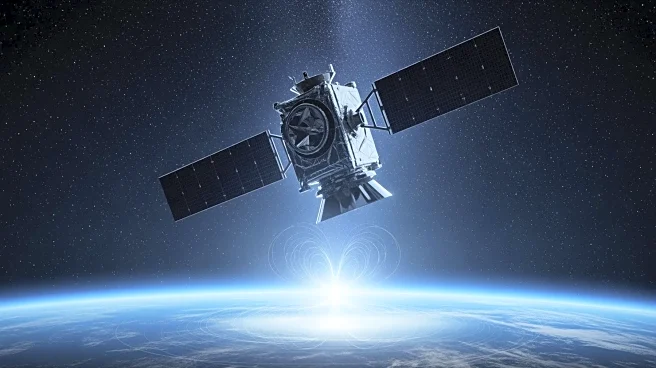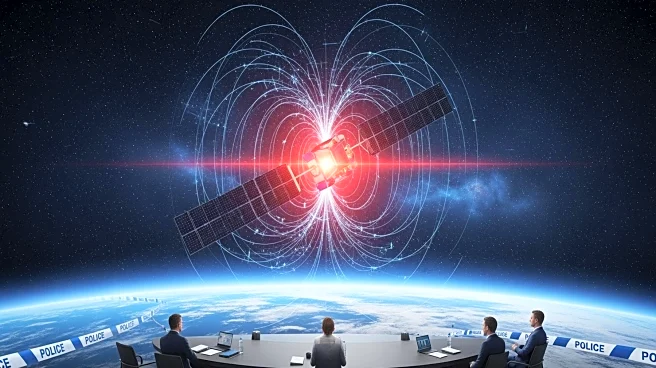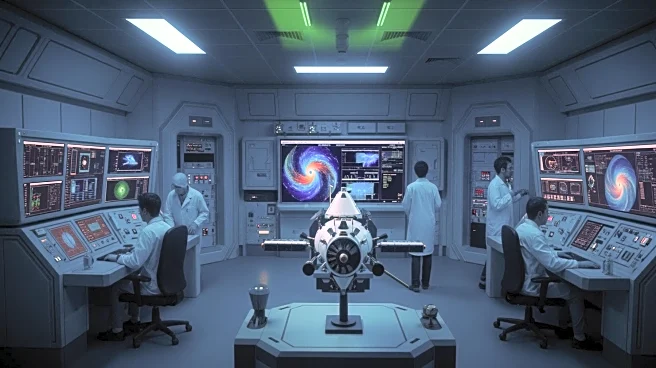What's Happening?
The European Space Agency (ESA) has introduced a new metric called the Space Environment Health Index to assess the current state of orbital congestion. The index currently stands at 4, significantly above the threshold of 1, which is considered sustainable
for long-term orbital activities. This high index value indicates that space is becoming increasingly congested, potentially leading to higher costs and the inaccessibility of certain orbits for space operators. The index is designed to provide a common language for evaluating the impact of space activities, similar to energy-efficiency ratings for household appliances. It considers factors such as size, orbital lifetime, maneuverability, and the risk of objects exploding or fragmenting in orbit. ESA hopes this index will be integrated into Europe's space industry, influencing licensing, regulatory, and insurance frameworks.
Why It's Important?
The introduction of the Space Environment Health Index is significant as it highlights the growing issue of space congestion, which poses risks to both current and future space operations. As the number of satellites and space debris increases, the likelihood of collisions and the associated costs also rise. This index could drive the development of more stringent regulations and policies aimed at mitigating space debris, ensuring the sustainability of space activities. The European Commission's EU Space Act, which is under development, may incorporate this index to enforce new rules, potentially impacting space operators and industries reliant on satellite technology. The broader adoption of this index could lead to more coordinated efforts in space traffic management and debris mitigation, benefiting the global space community.
What's Next?
The ESA's Space Environment Health Index may become a critical tool for regulators and policymakers as they draft new space-related legislation. The European Commission's EU Space Act, which is still in the drafting phase, could adopt this index as a basis for future space-licensing requirements. This would ensure that new space missions do not exacerbate the problem of orbital congestion. Additionally, space situational awareness companies and industry stakeholders are likely to advocate for proactive traffic management and transparent data sharing to address the challenges highlighted by the index. The ongoing discussions and potential regulatory changes could shape the future of space operations, emphasizing sustainability and collective responsibility.
